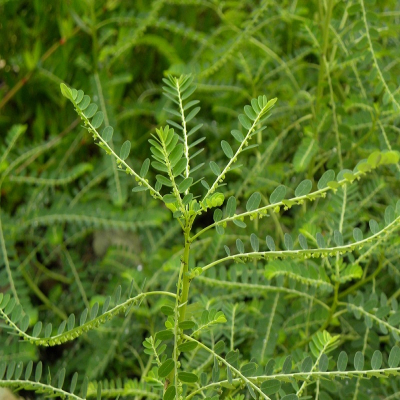Distribution and habitat: Throughout warmer parts of India as a weed in cultivated and waste lands.
Botany: A branching annual glabrous herb 30-60 cm high with slender, spreading leaf-bearing branchlets.
- Leaves: Numerous, distichous, subsessile, elliptic-oblong, obtuse, base rounded.
- Flowers : Yellowish, greenish or whitish, axillary, males in group of 1-3, females solitary.
- Fruits : Depressed globose smooth capsules underneath the branches,
- Seeds : Trigonous, pale brown with longitudinal parallel ribs on the back .
Chemical constituent:
- Aerial parts- nor-securinine, 4-methoxy-nor-securinine, nirphyllin, phyllantheon, phyllanthenol, tricontanol, thallic acid bis- ester
- Leaves- niranthin, nirtetralin, phyllanthin, hypophyllanthin, vitamin C and phyltetralin
Uses: The whole plant is used against gastropathy, dropsy, jaundice, diarrhoea, dysentery, intermittent fevers, ophthalmopathy, diseases of urino-genital system, scabies, ulcers and wounds.
Formulations: Jamalakilem, Parutyadi tailam.
Propagation: Seeds


